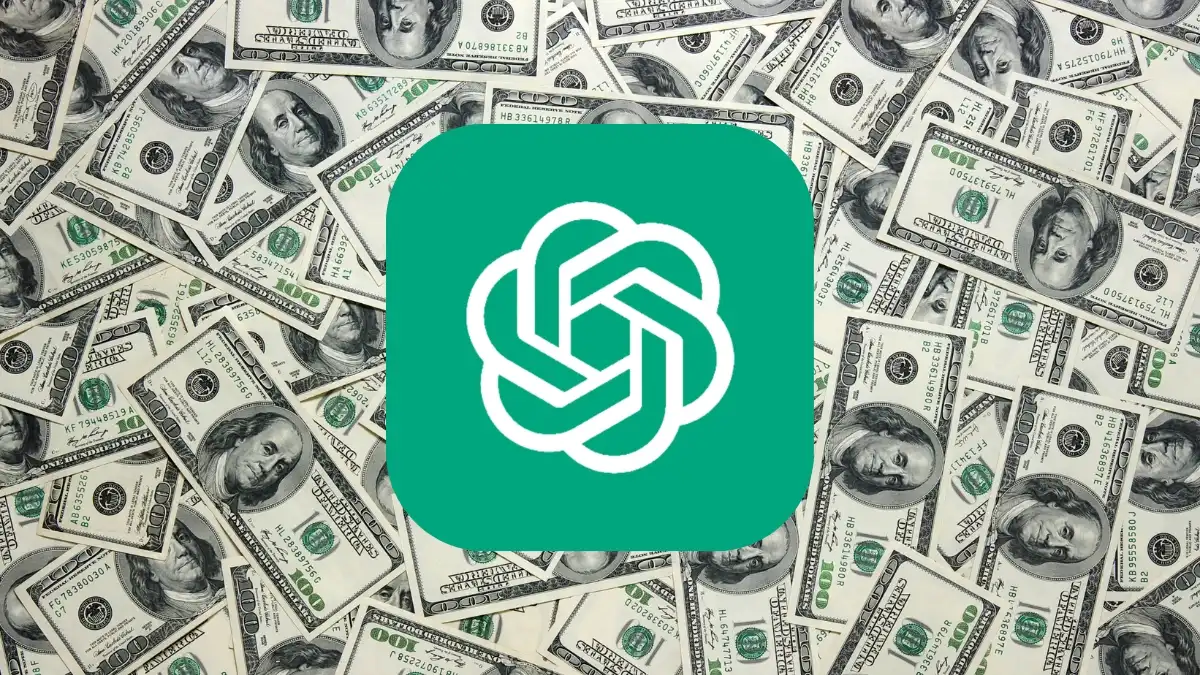A bank job paying $26,000 a year could be replaced by a Canva template business earning $1.4 million. That’s Katya Varbanova’s real story. Today, with 800 million ChatGPT users and 220 million Canva users, the opportunity is massive—even for beginners.
Let’s be honest: $17,690 monthly combines multiple methods after 6-12 months of work. Most start at $500-1,000 monthly before scaling up.
In this guide, you’ll discover 9 proven income streams with exact earnings potential, the tools you need (all under $50/month), step-by-step plans, and real success examples—no experience required.
1. Canva Template Business Development

Creating and selling digital design templates using Canva’s intuitive platform represents a scalable passive income opportunity. This business model leverages the growing demand for professional visual content across multiple industries without requiring formal design credentials.
Implementation Strategy:
Successful template businesses focus on niche-specific template bundles rather than standalone designs. The development process involves market research to identify underserved sectors, creating comprehensive template collections (20-40 templates per bundle), designing professional mockups, and implementing strategic pricing models.
Revenue Structure:
- Entry Level: $500-1,000 monthly (first 6 months, 5-10 template bundles)
- Established: $1,000-3,000 monthly (10-20 optimized bundles, email marketing)
- Advanced: $5,000-20,000+ monthly (diversified template portfolio, multiple sales channels)
Distribution Channels:
- Etsy: Primary market for beginners (89.9M active buyers, lower barriers to entry)
- Creative Market: Professional design marketplace commanding premium pricing
- Proprietary Website: Highest profit margins (70-90% vs 65-80% on third-party platforms)
Critical Success Factors:
- Bundle composition: Comprehensive solutions for specific business needs
- Licensing compliance: Using only properly licensed Canva elements
- Cross-platform distribution: Maximizing visibility across multiple marketplaces
- Consistent expansion: Adding 5-10 new templates monthly to maintain algorithm favor
Case Study Highlight:
Maliha from The Side Blogger consistently generates $1,000-3,000 monthly working approximately 10-20 hours per month, primarily from photography business templates and social media kits. Her success stems from specialized niche focus and consistent quality rather than design expertise.
2. AI-Enhanced Content Development Services

Using ChatGPT, this service model significantly accelerates content production while maintaining quality. The approach combines AI efficiency with professional editing to deliver content services at scale while maintaining competitive pricing.
Service Architecture:
Professional writers utilize ChatGPT for:
- Research aggregation and synthesis
- Content structure and outline development
- Initial draft generation
- Alternative phrasing and idea expansion
- SEO optimization recommendations
Market Positioning:
Position your service as “AI-enhanced” rather than “AI-generated,” emphasizing your role in quality control, subject matter expertise, and content strategy. This hybrid approach delivers faster turnaround while maintaining uniqueness and engagement.
Revenue Tiers:
- Entry Level: $500-1,000 monthly ($0.05-0.10/word, general content)
- Intermediate: $2,000-3,500 monthly ($0.15-0.25/word, specialized content)
- Advanced: $5,000-10,000+ monthly (retainer clients, premium content verticals)
Client Acquisition Framework:
- Portfolio development: 5-7 polished samples across different industries
- Platform optimization: Keyword-rich profiles on Upwork/Fiverr
- Tiered service structure: Basic, Standard, Premium packages
- Review acquisition: Competitive initial pricing to secure testimonials
- Value escalation: 50-100% rate increase after establishing reputation
Operational Efficiency:
Utilizing AI assistance can reduce production time by 60-80% for standard content types, enabling you to handle 3-5× the client volume compared to traditional methods while maintaining quality through systematic human review processes.
3. Integrated Social Media Content Management

Business without the internal resources to maintain consistent social media presence can take advantage of this comprehensive service that combines visual content creation with strategic messaging.The model integrates Canva for visual production and ChatGPT for copy generation, delivering complete content packages.
Service Components:
- Platform-specific visual content (Instagram, LinkedIn, Facebook, Pinterest)
- Engagement-optimized caption development
- Hashtag research and optimization
- Content calendar planning
- Performance analytics (optional premium tier)
Target Market Segmentation:
- Primary: Service businesses with high visual needs (real estate, hospitality, professional services)
- Secondary: E-commerce businesses requiring product showcasing
- Tertiary: Coaches, consultants, and personal brands seeking consistency
Revenue Structure:
- Per-post pricing: $20-100 per custom graphic with caption
- Monthly packages: $300-1,500 for 20-30 posts across platforms
- Premium services: $1,500-3,000 including strategy, analytics, and community management
Operational Workflow:
- Client onboarding: Brand guidelines, tone of voice, target audience analysis
- Content planning: Monthly theme development and content calendar
- Batch production: Platform-optimized visual content creation in Canva
- Copy generation: ChatGPT-assisted caption development
- Client approval: Streamlined review process
- Scheduling: Automated content distribution via Buffer/Hootsuite
Competitive Advantage: Your hybrid approach offers 60-70% cost savings compared to traditional agencies while delivering comparable quality through efficient AI integration and templated workflows.
4. Prompt Engineering and Marketplace Distribution

This business model involves developing, testing, and commercializing specialized AI prompts that deliver consistent, high-value outputs for specific use cases. The approach capitalizes on the growing market of AI users seeking reliable shortcuts to quality results.
Product Development Methodology:
- Market research: Identify high-demand prompt categories and underserved niches
- Prompt engineering: Develop precise, contextual instructions for reliable outputs
- Iterative testing: 5-10 test cycles per prompt to ensure consistency
- Documentation: Create comprehensive usage guides and examples
- Packaging: Bundle complementary prompts for enhanced value perception
Revenue Channels:
- Individual prompts: $2-50 per prompt based on complexity and application
- Prompt bundles: $10-100 for thematic collections (higher conversion rate)
- Subscription services: $5-20 monthly for continuously updated prompt libraries
Distribution Platforms:
- PromptBase: Specialized marketplace, 80% revenue share, targeted audience
- Etsy: Broader audience, lower platform awareness but higher traffic
- Custom website: Maximum margin, allows for subscription models
Portfolio Development Strategy: Successful prompt sellers maintain extensive catalogs (50-200+ prompts) across multiple categories, with focus on:
- Business operations (emails, reports, analyses)
- Marketing assets (copy, hooks, campaigns)
- Creative applications (storytelling, character development)
- Technical solutions (code generation, data analysis)
Case Study Insight: A mid-level seller achieved $700 revenue within 60 days through a catalog of 50 specialized prompts for business communications, with the top 20% of prompts generating 80% of revenue.
5. Amazon Kindle Direct Publishing Strategy

Both AI-assisted content books and low-content publications are distributed using Amazon’s print-on-demand infrastructure. The approach requires minimal upfront investment while offering global distribution and automated fulfillment.
Product Categories:
A. AI-Assisted Content Books:
- How-to guides and instructional content
- Specialized knowledge compilations
- Trend analysis and market research
- AI prompt collections and tutorials
B. Low-Content Publications:
- Planners (business, fitness, academic, wedding)
- Journals (gratitude, travel, food, pregnancy)
- Activity books (coloring, puzzles, educational)
- Organizational tools (budgeting, habit tracking)
Revenue Mechanics:
- Royalty structure: 35-70% based on pricing strategy and territories
- Optimal pricing: $2.99-9.99 (70% royalty tier)
- Revenue per title: $20-500 monthly depending on niche and marketing
- Portfolio approach: 5-10 books generating $1,000-3,000 monthly combined
Production Framework:
- Market research: Keyword analysis using Publisher Rocket or KDP Spy
- Content development: ChatGPT-assisted outline and chapter generation
- Differentiation: Adding unique insights, case studies, and recent data
- Design: Professional cover creation using Canva templates or Fiverr designers
- Optimization: Keyword-rich titles, compelling descriptions, category selection
- Marketing: Pinterest promotion, email list building, cross-promotion
Success Variables:
- Niche selection: Specific topics outperform general subjects
- Publish frequency: 1-2 titles monthly for algorithm favor
- Quality signaling: Professional cover design and formatting
- Series development: Related titles for cross-promotion opportunities
6. AI-Enhanced Virtual Assistant Services

In this service model, traditional virtual assistant capabilities are combined with AI-powered efficiency to provide premium administrative support at an affordable price. The approach maximizes hourly productivity through systematic AI integration.
Service Verticals:
- Email management and communication
- Calendar coordination and scheduling
- Customer service and inquiry handling
- Data organization and analysis
- Research and information synthesis
- Social media coordination
Productivity Enhancement: By leveraging ChatGPT for routine tasks, virtual assistants can:
- Draft email responses for human review (70-80% time reduction)
- Generate meeting summaries and action items (60% efficiency improvement)
- Create templated responses for common inquiries (50-70% time savings)
- Organize and categorize information (40-60% faster processing)
Revenue Structures:
- Hourly model: $20-50 per hour based on specialization and experience
- Package model: $500-2,000 monthly for defined service bundles (most profitable)
- Retainer model: Guaranteed availability with priority response
Client Acquisition Strategy:
- Specialized positioning: Industry-specific expertise (legal, real estate, finance)
- Efficiency demonstration: Comparative time savings versus traditional VAs
- Tiered service offerings: Basic, Professional, and Executive packages
- Trial period incentives: Reduced-rate introductory periods
Operational Framework:
- Service scope documentation: Clear deliverables and boundaries
- Process development: Standardized workflows for common tasks
- AI integration: Prompt templates for recurring requirements
- Quality assurance: Human review protocols for all AI-assisted outputs
7. YouTube Content Production System

This model offers two distinct revenue paths: providing scriptwriting services for YouTube creators or developing your own content channels using AI-assisted production methods. Both approaches leverage ChatGPT to streamline the content development process.
Option A: YouTube Scriptwriting Services
Service Offering: Professional script development for YouTube content creators, including:
- Topic research and validation
- Script structure and narrative development
- Engagement optimization (hooks, CTAs, audience interaction)
- SEO-optimized titles and descriptions
- Timestamp frameworks for enhanced viewer retention
Pricing Structure:
- Basic scripts: $50-100 (5-10 minute videos, general topics)
- Standard scripts: $100-200 (10-15 minute videos, researched content)
- Premium scripts: $200-500 (comprehensive, data-driven content)
- Package deals: $500-2,000 monthly for regular clients (4-8 scripts)
Client Acquisition: Target mid-sized YouTube channels (10,000-100,000 subscribers) that have:
- Monetization established but limited production capacity
- Regular posting schedules requiring content pipelines
- Professional approach to content creation
- Budget for outsourcing but not full production teams
Option B: AI-Assisted Channel Development
Implementation Strategy:
- Niche selection: Identify knowledge-based verticals with advertising potential
- Content planning: Develop series concepts and audience value propositions
- Script generation: ChatGPT-assisted script development
- Visual production: Stock footage integration, animation templates, screen recording
- Voice integration: AI voiceover services or narration
- Optimization: Keyword research, thumbnail design, metadata optimization
Monetization Timeline:
- Month 0-3: Channel establishment, no significant revenue
- Month 3-6: Initial ad revenue ($50-300 monthly if meeting requirements)
- Month 6-12: Growing ad revenue, affiliate integration ($500-1,500)
- Month 12+: Established channels ($1,000-3,000+ monthly)
Monetization Requirements:
- 1,000 subscribers minimum
- 4,000 watch hours within 12 months
- Adherence to YouTube monetization policies
8. Email Marketing and Automation Services

Combining ChatGPT’s content generation capabilities with performance optimization, this service provides high-conversion email marketing solutions for businesses.
Service Categories:
- Welcome/onboarding sequences ($500-1,500 for 5-7 emails)
- Abandoned cart recovery campaigns ($300-800 for 3-5 emails)
- Product launch sequences ($800-2,000 for complete funnel)
- Newsletter management ($200-500 monthly for weekly content)
- Automated behavioral sequences ($600-1,200 for triggered campaigns)
Implementation Methodology:
- Client onboarding: Goals, voice, audience, and conversion metrics
- Platform setup: Technical infrastructure and integration
- Strategy development: Campaign mapping and conversion pathways
- Content creation: ChatGPT-assisted email drafting with human refinement
- A/B testing: Subject line and content variation testing
- Analytics: Performance reporting and optimization
Value Proposition: Email marketing delivers $36-42 ROI for every $1 invested, making it one of the highest-return marketing channels available. Your service makes this accessible to businesses without in-house expertise.
Market Opportunity: 64.1% of small businesses utilize email marketing but lack expertise in:
- Conversion optimization
- Segmentation strategy
- Automation implementation
- A/B testing methodology
- Deliverability management
Client Retention Strategy:
- Monthly performance reporting with transparent metrics
- Continuous campaign optimization based on results
- Expanding from single campaigns to comprehensive email strategy
- Cross-selling additional services (social media, content development)
9. Print-on-Demand Product Business

This business model combines Canva’s design capabilities with print-on-demand manufacturing to create physical products sold without inventory requirements. The approach offers passive income potential with minimal upfront investment.
Product Categories:
- Apparel: T-shirts, hoodies, hats ($5-15 profit margin)
- Home décor: Wall art, pillows, throws ($8-25 profit margin)
- Accessories: Phone cases, bags, stickers ($4-12 profit margin)
- Stationery: Notebooks, planners, cards ($3-10 profit margin)
Design Development Strategy:
- Market research: Trending aesthetics, niche interests, evergreen themes
- Design creation: Canva-based artwork with proper licensing compliance
- Mock-up generation: Product visualization across multiple items
- Listing optimization: Keyword-rich titles, descriptions, and tags
- Pricing strategy: Competitive analysis and margin calculation
Platform Selection:
- Redbubble: Beginner-friendly, built-in marketplace, lower margins
- Printify/Printful: Higher margins, integration with Etsy and Shopify
- Merch by Amazon: Massive traffic, competitive, application required
Portfolio Development: Successful sellers maintain extensive design libraries (100-300+ designs) focused on:
- Niche communities with passionate interests
- Trending seasonal themes
- Evergreen concepts with enduring appeal
- Text-based designs with relatable messaging
Scaling Strategy:
- Weekly uploads: 5-10 new designs to maintain algorithm favor
- Cross-platform listing: Multiple marketplaces for diversified income
- Design repurposing: Adapting successful concepts across product types
- Pinterest marketing: Visual discovery platform driving significant POD traffic
Critical Requirements:
- Original designs: Multiple Canva elements combined into unique compositions
- Legal compliance: Following platform terms of service and licensing requirements
- Quality control: Testing products before scaling promotion
- Metadata optimization: Comprehensive keyword research and implementation
Implementation Strategy for Maximum Revenue
Progressive Development Model:
The most effective approach to reaching the $17,689 monthly revenue target involves systematic implementation across multiple methods:
Phase 1: Foundation (Months 1-3)
- Select one primary method aligned with your strengths
- Invest 15-20 hours weekly in skill development and implementation
- Focus on establishing processes and quality standards
- Target: $500-1,500 monthly revenue
Phase 2: Optimization (Months 4-6)
- Refine primary revenue stream through data-driven improvements
- Increase pricing based on established reputation
- Implement systems for efficiency and scalability
- Add a complementary secondary method
- Target: $1,500-4,000 monthly revenue
Phase 3: Diversification (Months 7-12)
- Scale primary and secondary methods to near-automation
- Integrate third and potentially fourth revenue streams
- Develop cross-promotion between different business lines
- Begin outsourcing lower-value activities
- Target: $5,000-10,000+ monthly revenue
Phase 4: Optimization (Year 2)
- Focus on highest-ROI activities across all business lines
- Implement advanced marketing and sales systems
- Develop premium offerings in most successful categories
- Strategic outsourcing for scale without proportional time investment
- Target: $10,000-20,000+ monthly revenue
This phased approach acknowledges the realistic timeline required to build sustainable income streams while providing clear benchmarks for progression. The $17,689 figure becomes achievable through strategic combination of 3-4 complementary methods operating at scale with appropriate systems and potentially limited outsourcing.
